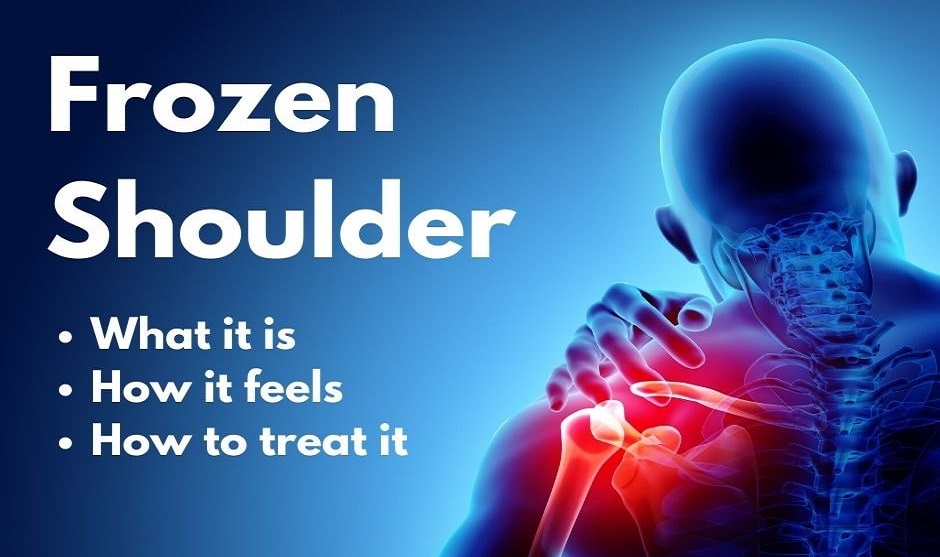Do you experience a dull or achy pain in your shoulder?
Does the pain get worse at night?
Don’t be concerned; this article of Frozen Shoulder Rehabilitation will provide you with expert advice and practical solutions to alleviate your discomfort.
How To Cure Frozen Shoulder Quickly
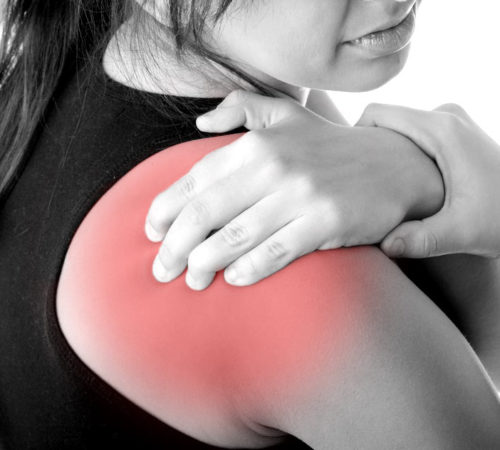
First of all, you need to learn about the causes of this pain.
- What exactly is frozen shoulder?
This can be defined as shoulder stiffness, often caused by muscles wrapping tight around your shoulder joint.
I know you may have many questions about this condition.
Some of these questions may include:
- How can frozen shoulder be cured quickly?
- What are the causes of this type of shoulder pain?
I will help you answer all these questions.
And, by the way…
- Did you know that frozen shoulder is known by several different terms?
This condition is also referred to as adhesive capsulitis, synovitis, and capsule contracture.
It is a painful condition which leads to shoulder stiffness, and this condition becomes more severe at night. (1)
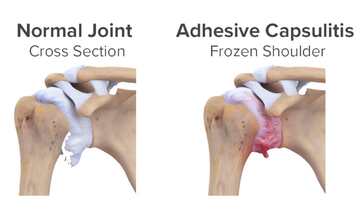
Some celebrities, like the singer Sinitta Melone and comedian Ricky Gervais, are also known to suffer from frozen shoulder.
In this article, I will share with you the main causes and symptoms, as well as factors that may increase the risk of developing this condition.
But you no longer need to worry; I have a long term, tried-and-tested rehab solution for your problem.
Find out how this laser-focused, customised shoulder rehab programme will help you get rid of shoulder pain and thereby become more stable, strong and balanced.
Exercise customisation can help you recover faster from shoulder pain, allowing you to get back to enjoying tennis, badminton, and the other activities you love.
Request FREE ONLINE CONSULTATION now!
Does It Affect Women More Than Men?
- Did you know that this painful shoulder condition affects more women than men?
And…
- If you are between the ages of 40 and 60, you are more prone to develop this type of injury?
And here is another interesting fact.
Twins have a higher risk of acquiring this type of shoulder injury due to a genetic disposition (2)
The singer Sinitta Melone is also known to have suffered from this condition.
Based on press reports, she was unable to lift her right arm due to persistent shoulder pain.
Similarly, Ricky Gervais suffered from a frozen shoulder.
He called his shoulder a “50-year-old shoulder”.
When asked how it felt, Ricky Gervais characterised it as pain “like rubbing salt in the wound.”
What Factors Can Contribute to This Type of Shoulder Pain?
Do you know what the major cause of this sort of shoulder pain is?
One of the most common reasons is loss of mobility resulting from any type of shoulder related injury or trauma.
There are many factors which cause this type of shoulder problem.
Here are just some of the major factors for you:
1. Primary and secondary shoulder pain associations: The majority of primary shoulder pain has an unknown cause, however secondary shoulder pain is associated with previous shoulder injuries like rotator cuff damage, or other conditions such as immobilisation and trauma.(3)
2. Cardiovascular disease: According to research, Cardiac disease patients are more prone to develop frozen shoulder.
Did you know that, in most cases, cardiac disease patients have raised lipid levels?
Raised serum lipid level produce an increase in the concentration of cholesterol and triglycerides in the shoulder, which has been linked to shoulder pain. (4)
3. Diabetes: Diabetic patients experience more stiffness in their joints. As a result, those with insulin-dependent diabetes are more susceptible to severe shoulder discomfort.
In these patients, shoulder stiffness occurs in two forms: frozen shoulder and post traumatic stiff shoulder.(5)
As a result, diabetic people are at increased risk of developing this type of shoulder injury than non-diabetic individuals.(6)
4. Rotator cuff injury: Did you know that this type of shoulder pain is also caused by rotator cuff injury?
A rotator cuff injury limits shoulder joint mobility and may increase your risk of developing this type of shoulder pain.

5. Profession: Rotator cuff injuries are very common in specific occupations, such as archers, carpenters, painters, sports athletes, and tennis players.
People in these professions are therefore more at risk from developing this type of shoulder problem.
- Parkinson’s disease: This disease may lead to this type of shoulder problem too.
Musculoskeletal discomfort is a common first sign of Parkinson’s disease.
The research shows that patients have significant improvement in musculoskeletal symptoms with dopaminergic treatment.(7)
And did you know …
Parkinson’s disease patients with significant posture impairment have increased thoracic kyphosis and reduced trunk mobility.
This can result in capsulitis or this type of shoulder condition, as well as general restriction in shoulder mobility.(8)
6. Stroke and spinal cord injury are also known to increase the likelihood of developing frozen shoulder.
With this in mind…
- Do you have any questions about a shoulder injury or chronic pain?
- Would you like to return to your job faster, and be able to resume hobbies like tennis or badminton?
- Do you want to avoid your shoulder discomfort or injury from worsening, as well as consolidate and strengthen your shoulder joint?
How to Cure Frozen Shoulder Quickly
Since there are many causes for this type of shoulder problem, there are several types of shoulder rehab customisation program available.
A laser-focused rehab customisation is therefore essential.
This personalised approach will provide you with the best chance of recovering from this type of shoulder pain.
Frozen Shoulder Symptoms
One of the main symptoms of this type of shoulder injury is shoulder stiffness and immobility of the joint, leading to a dull and achy pain.
Your pain is also felt at top of shoulder due to the joint muscles which wrap very tight around the top of your shoulder.
Usually, the pain is located in the upper arm area.
Sometimes it gets worse at night which makes it difficult to sleep.
Here are some very important risk factors you must consider:
1. This type of shoulder can also lead to neck and cervical pain. Did you know that frozen shoulder is a symptom associated with neck pain?
Research shows that cervical pain may begin at the onset of this type of shoulder problem.(9)
2. This type of shoulder pain is cyclical. This cycle can last anywhere from 6 months to 2 years.
Here is a research-based disease progression scenario.
- As the discomfort in the shoulder worsens, it spreads throughout the arm. It occurs shortly after the injury.
- The pain persists and shoulder mobility is reduced to just 20 degrees.
- The severity of pain decreases, but stiffness remains.
- The pain is relieved, and mobility is slowly regained.(10)
3. Bicep tendon inflammation: Did you know that inflammation of the bicep tendon is considered as a cause of this type of shoulder?
The bicep is the muscle of your upper arm.
Your bicep tendon connects to your shoulder.
When the biceps become inflamed or you have bicep tendonitis, it can cause shoulder immobility and possibly aggravate other shoulder issues.
4. Ageing and degeneration: As people become older, their tendons degenerate. Chronic inflammatory reaction in the supraspinatus muscle can also cause this type of shoulder issue.
Degeneration changes are mostly observed in supraspinatus tendon.
So, in this type of shoulder problem, the supraspinatus muscle is the site of the primary lesion and the cause is degenerative.(10)
Is frozen shoulder pain unbearable?
Yes, the pain could be dull and achy, but it is often acute and feels unbearable. This is caused by a few factors, one of which is a limited range of motion in the shoulder.
But…
- Did you know that synovial fluid in the shoulder reduces friction but, in this type of shoulder injury, scar tissues develop in the joint?
The scar tissues cause capsules to tighten and thicken, reducing space for movement.
Therefore, your arm and movements become stiff, and your shoulder is painful.
What is frozen shoulder pain like?
It is the sort of pain that is only felt when moving; nevertheless, the pain varies depending on the stage of the condition.
Most severe pain tends to occur at the end range of motion.
So, do you know how to cure frozen shoulder quickly?
You might be surprised to know…
This type of shoulder can be treated relatively quickly by employing the body postures I have noted below.
They are required to be customised for your rehabilitation needs.
How to sleep with frozen shoulder injury?
All inflammatory conditions like this may cause overnight pain due to natural processes that occur at night. Therefore here are some tips on how to sleep with a frozen shoulder:
- Don’t sleep on your tummy. Sleeping on your tummy may position your shoulder into an unstable posture. This can cause further damage to your shoulder joint.
- Lie on the unaffected side: This will reduce pressure in shoulder capsule and your pain will decrease
- Sleep on your back: Straightening your arms relieves strain on your joints and muscles of the shoulder, neck, and arms.
- Use pillows on either side to support elbow and shoulder: This will reduce pressure on the capsule. Similarly, cuddling pillow by arm could relieve pressure on your affected shoulder.
By placing your pillow below your neck, will relax the muscles of your neck and reduce tension on muscles of your shoulder joint.
- Do you have any shoulder pain and difficulty in moving your arm above your head?
- Do you have this type of shoulder diagnosis or any other shoulder related condition?
Book now a FREE ONLINE CONSULTATION!

The 3 Stages of this Type of Shoulder Pain
Before discussing the stages of this type of shoulder problem, I’m sure you would like to know how to cure frozen shoulder quickly.
Your answer will become clearer when you learn about the stages of this type of shoulder problem and what you can do to overcome your pain.
This type of shoulder does not develop suddenly at once.
Usually, it progresses step by step.
Here, I’ll go over the three stages of your shoulder rehabilitation.
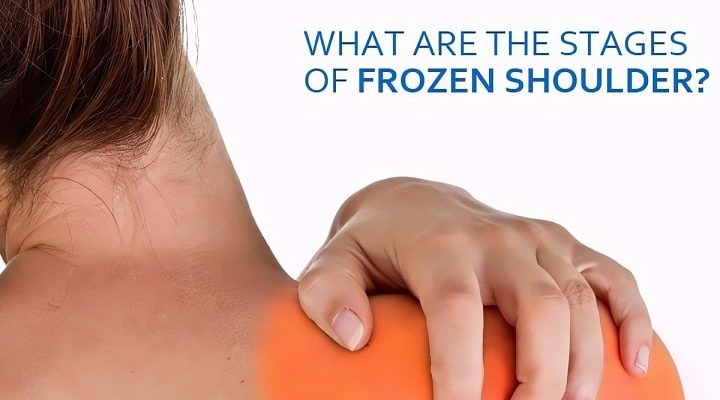
1. Freezing stage (very painful) / Early Stage
As this is first stage, pain starts gradually but progresses and is therefore called the painful stage.
Your shoulder motion will be limited and becomes more severe and painful at night.
This stage may last between 2 to 9 months.
One of the main causes of this early stage could be any kind of trauma and inflammation in the shoulder capsule which, in turn, causes limited motion and further pain.
2. Frozen stage (adhesive) / Developed Stage
At this stage, the pain becomes less pronounced therefore, your pain level is a little lower.
However, you continue to experience shoulder stiffness with restricted mobility, and you are still suffering from a very limited range of motion.
Pain will be felt at the end range of motion.
This stage is not as bad as the freezing stage (Phase 1).
The usual duration of this stage is between 4 to 12 months.
The pain can travel down to the arm, and it will affect your day-to-day activities and lifestyle.
During this stage, you will benefit from frozen shoulder diet plan and tailored exercises which will shorten this phase as much as possible.
The exercise-based rehab customisations and nutrition plan (yes, nutrition could shorten your recovery) I will design for you will help you advance quickly, allowing you to consolidate your shoulder in a straightforward manner.
3. Thawing stage / Recovery Stage
When you reach this rehab stage, your shoulder pain has dramatically reduced.
So, what does the thawing stage of this type of shoulder feel like?
It feels like there is little to no pain and the intensity is mild.
You will feel it at the end of your range of motion.
At this stage, the laser-focused customisations employed in your situation will have helped you to regain normal movement.
Research shows that this may continue anywhere from 12 to 42 months, but this laser-sharp, customised shoulder rehab cuts that time down to the bare minimum.
As a result, at the end of this rehab period, you will have regained normal shoulder range of motion.
Let me ask you a few important questions:
- Is your shoulder more painful when you play badminton, tennis and raise your arm above the head?
- Is your shoulder pain more intense at certain periods of the day or night?
If you responded yes to any of these questions.
Keep reading – this article is for you.
Which Frozen Shoulder Diet Plan can help me improve this pain?
As you might expect, diet is a very important consideration when dealing with any inflammatory condition.
Therefore, in this section I will briefly discuss the best type of diet you require for this type of shoulder problem.
There are many important pieces of advice but, I will pick just one.
The Effects of an Inflammatory Diet vs an Anti-Inflammatory Nutrition Plan
In this particular case a diet which can cause inflammation must be avoided.
However,
Bear in mind that all nutrition recommendations must be customised.
Therefore, before implementing anything into your diet make sure that you aren’t suffering from any allergies and sensitivities.
And…
Before beginning any workout or diet regimen, always double-check everything with your doctor or health expert and obtain their consent.
If you aren’t allergic and don’t have any type of associated conditions, you should aim for a high intake of:
- raw green vegetables but, also some fruits like
- papaya,
- kiwis,
- cherries,
- figs and
- pineapple.
Some of these foods contain proteolytic enzymes which may help to reduce inflammation.
Raw seeds such as flaxseeds and chia, nuts, ginger, and cumin, provided you are not sensitive to them, might also be consumed in large quantities because they contain omega 3 fatty acids and other anti-inflammatory compounds.
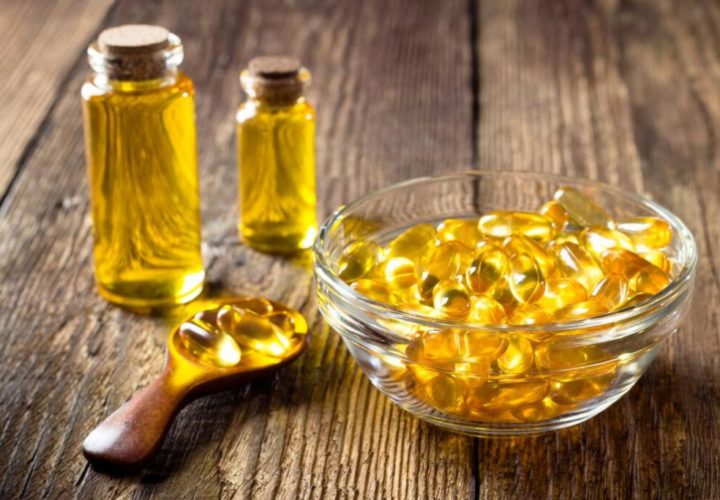
Research shows that omega 3 fatty acids are used to prevent inflammation which may reduce joint pain. (11)
A laser-focused, customised diet plan will undoubtedly aid you in your efforts to rehabilitate your shoulder, but the question remains…
Does Shoulder Bursitis Always Lead to The Frozen Shoulder?
As mentioned, this type of shoulder problem may be caused by shoulder immobilisation after surgery, trauma, or after any type of upper body injury involving this joint.
But…
It could also be caused by muscular inflammation, rotator cuff tendinitis, or bursitis.
In many cases, this type of shoulder discomfort is accompanied with inflamed shoulders, which may be caused by bursitis.
Research shows that increased levels of inflammatory cytokines in subacromial bursa lead to inflammation of the shoulder capsule.(12)
These can cause inflammatory contractures in your shoulder joint which leads to inflamed synovium and a thickened joint capsule.
In short…
You must be aware that this type of shoulder issue involves synovium inflammation and capsule fibrosis. (13)
Diagnosis
During a physical examination, your sport MD, physio, chiropractor, or osteopath will identify this sort of shoulder issue.
They will measure how badly your shoulder muscles and joint are impacted throughout your assessment.
They may examine both your active and passive ranges of motion, as well as the differential between active and passive ranges of motion in your joint.
Usually,
A physical exam can be enough to diagnose this type of shoulder however, in some cases imaging testing is also required.
These can include:
- X-rays Ultrasound and
- MRI
These extra tests can help your clinician to rule out other conditions like arthritis or a torn rotator cuff.
However,
In order to diagnose the exact cause of this type of shoulder issue, it is still compulsory to perform a shoulder test.
To gain an idea, you might try this test on your own as a self-test.
How do you do this?
Stand tall in front of your mirror.
You must ensure that you will not experience any pain throughout.
If you experience any excessive stiffness and shoulder pain, you must stop straight away
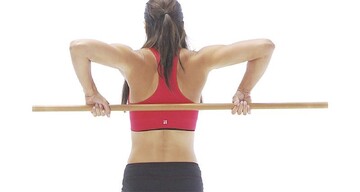
Stand tall with both arms alongside your body and bend your elbows to 90 degrees.
While keeping your elbows tucked in at your sides, rotate your arms outward.
This arm action is known as external rotation.
If you have this sort of shoulder condition, the painful side will not rotate as much as your non-painful arm, so keep an eye out for any limits.
Customised Frozen Shoulder Rehabilitation
Firstly,
You must have exercise clearance from your physio or MD to start your rehabilitation.
For this type of shoulder pain, comprehensive assessments (1-2-1 consultation) and tailored exercises are always the first line of intervention.
Your shoulder rehab program may contain the following items, depending on your symptoms and stage of condition:
- arm mobilization;
- stretching and;
- strengthening exercises
The laser-focused customised rehab exercises will safely help to:
- Loosen up the capsule of shoulder;
- Increase your range of movement and;
- Increase shoulder joint mobility.
Each stage of frozen shoulder rehabilitation will necessitate a unique combination of personalised mobilisation, stretching, strengthening, and specific exercises to help you stabilise and solidify your joint as quickly as possible.
Because everyone’s postures, employment, lifestyle, age, gender, and mobility patterns varies, shoulder rehab customisation is crucial.
However, how can a frozen shoulder be treated quickly?
To address this type of shoulder injury quickly, you require a customised frozen shoulder rehab program.
Some of the goals will help you reduce and eliminate pain while others will help the muscles around your shoulder joint in a balanced manner.
This laser-focused customised rehabilitation program will help you in many ways, including to:
- Mobilise and activate the right muscles without causing you shoulder pain
- Strengthen your shoulder in preparation for sports or activities
- Regain optimum range of motion
- Return to day-to-day life
- Maximise your shoulder power input by 2-3 folds
- Train your upper body in balance, avoiding further imbalances
- Reduce and eliminate your shoulder pain through selected exercise, movements, and activities
- Reduce your risk of further shoulder injuries
- Maximise your shoulder joint functionality.
A customised frozen shoulder rehab program will also assist you in becoming physically fit quickly and safely.
As a result, you will quickly return to normal, develop your upper body strength, and boost your confidence levels.
You will be able to tone up your biceps, triceps, deltoids, and chest muscles as well as improving your overall health and look.
Would you like to learn more regarding frozen shoulder exercises for quick relief?
- Book now your FREE ONLINE CONSULTATION!
Pre-Injury Prevention
Injury prevention is one of the most important parts of muscle and skeletal health.
It helps you minimise and eliminate injury risks.
Therefore, in a safe manner, I can help you reach optimum strength, consolidate your shoulder joint, and achieve both active and passive range of motion in your shoulder.
The Shoulder Joint Is Complex
When moving hemiplegic patients and seating them in chairs, extra care must be taken to protect them against undue stress.
Customised strength and progressive range of motion exercises are crucial, and individualised rehab helps to prevent occurrences of this type of shoulder injury.
- But did you know that immobilising the upper extremity after aortic aneurysm surgery increases the likelihood of this type of shoulder pain? Aortic aneurysm surgery is performed on the aorta, the primary blood artery of the heart. An Aortic aneurysm forms in the wall of the aorta and weakens it; this mass is removed during aortic aneurysm surgery.
However, when the client is directed by customised passive shoulder motions designed specifically for her or his needs, the chances of acquiring this sort of shoulder injury are lowered. (14)

Conclusion:
This type of shoulder problem is a common condition.
It happens in post-traumatic clients, and it affects more women than men.
It has three or four individualised rehab phases based on the stage of the condition.
How to cure frozen shoulder quickly?
The rehab solution is multifactorial.
This type of shoulder problem requires customised nutrition as well as a laser-focused exercise programme to properly mobilise and retrain the shoulder muscles, ligaments and, joint.
If you have clearance to exercise from your sport MD, physio or health professional…
You can start reclaiming your life back.
I can arrange a comprehensive assessment for you fast.
In addition, I will work with you closely, helping you to return to your best fitness and optimum shoulder function.
And in the process in a safe manner – you will become fit, toned, much stronger and happier.
In short, as you rehab your frozen shoulder you are completely transforming your mood, body and health.
Who is Jazz Alessi?
Jazz’s clients rate him as one of the best elite personal trainers in London. He is a shoulder rehab expert.
He has more than 20 years’ experience and trains some of best athletes in the world.
Jazz is a certified rehab trainer, a second-generation Pilate’s teacher, a clinical exercise specialist, and has extensive injury rehabilitation training.
He is a specialist in this type of shoulder recovery.
Jazz is also a weight loss and sports nutrition specialist who has worked with Olympic athletes, tennis players, football players, and marathon runners and works with reputable organisations like LSE, Cameron McKenna and City Bank.
- Do you have any questions?
- Are you ready to get started?
Contact Jazz Alessi by clicking on this link now
References:
- Dias R, Cutts S, Massoud S. Frozen shoulder. BMJ. 2005;331(7530):1453. https://www.bmj.com/content/331/7530/1453?ehom
- Robinson CM, Seah KTM, Chee YH, Hindle P, Murray IR. Frozen shoulder. The Journal of Bone and Joint Surgery British volume. 2012;94-B(1):1-9. https://online.boneandjoint.org.uk/doi/full/10.1302/0301-620X.94B1.27093
- Hsu C-L, Sheu WHH. Diabetes and shoulder disorders. J Diabetes Investig. 2016;7(5):649-51. https://www.ncbi.nlm.nih.gov/pmc/articles/PMC5009124/
- Bunker TD. Frozen shoulder: unravelling the enigma. Ann R Coll Surg Engl. 1997;79(3):210-3. https://www.ncbi.nlm.nih.gov/pmc/articles/PMC2502880/
- Scarlat MM, Goldberg BA, Harryman Ii DT. Frozen shoulder in diabetic patients: Handle with care. The Journal of Musculoskeletal Medicine. 2000;17:484. https://bit.ly/3FMc3Jq
- Safran O, El-Haj M, Leibowitz G, Beyth S, Furman Z, Milgrom C, et al. Should Patients With Frozen Shoulder Be Screened for Diabetes Mellitus? Orthop J Sports Med. 2017;5(7):2325967117716450. https://journals.sagepub.com/doi/full/10.1177/2325967117716450
- Farnikova K, Krobot A, Kanovsky P. Musculoskeletal problems as an initial manifestation of Parkinson’s disease: a retrospective study. J Neurol Sci. 2012;319(1-2):102-4. https://www.sciencedirect.com/science/article/abs/pii/S0022510X12002122
- Papalia R, Torre G, Papalia G, Baums MH, Narbona P, Di Lazzaro V, et al. Frozen shoulder or shoulder stiffness from Parkinson disease? Musculoskelet Surg. 2019;103(2):115-9. https://link.springer.com/article/10.1007/s12306-018-0567-3
- Lundberg BJ. The Frozen Shoulder: Clinical and Radiographical Observations the Effect of Manipulation Under General Anesthesia Structure and Glycosaminoglycan Content of the Joint Capsule Local Bone Metabolism. Acta Orthopaedica Scandinavica. 1969;40(sup119):1-59. https://www.tandfonline.com/doi/pdf/10.3109/ort.1969.40.suppl-119.01
- Simmonds FA. Shoulder pain with particular reference to the frozen shoulder. The Journal of bone and joint surgery British volume. 1949;31B(3):426-32. https://online.boneandjoint.org.uk/doi/pdf/10.1302/0301-620X.31B3.426
- Hudek R, von Schacky C, Passow A, Abdelkawi AF, Werner B, Gohlke F. Degenerative rotator cuff tears are associated with a low Omega-3 Index. Prostaglandins, Leukotrienes and Essential Fatty Acids. 2019;148:35-40. https://www.sciencedirect.com/science/article/abs/pii/S0952327819300559
- Lho Y-M, Ha E, Cho C-H, Song K-S, Min B-W, Bae K-C, et al. Inflammatory cytokines are overexpressed in the subacromial bursa of frozen shoulder. Journal of Shoulder and Elbow Surgery. 2013;22(5):666-72. https://www.sciencedirect.com/science/article/abs/pii/S1058274612002777
- Tamai K, Akutsu M, Yano Y. Primary frozen shoulder: brief review of pathology and imaging abnormalities. Journal of Orthopaedic Science. 2014;19(1):1-5. https://www.sciencedirect.com/science/article/pii/S0949265815303559
- Tanishima T, Yoshimasu N. Development and prevention of frozen shoulder after acute aneurysm surgery. Surg Neurol. 1997;48(1):19-22. https://europepmc.org/article/med/9199679



